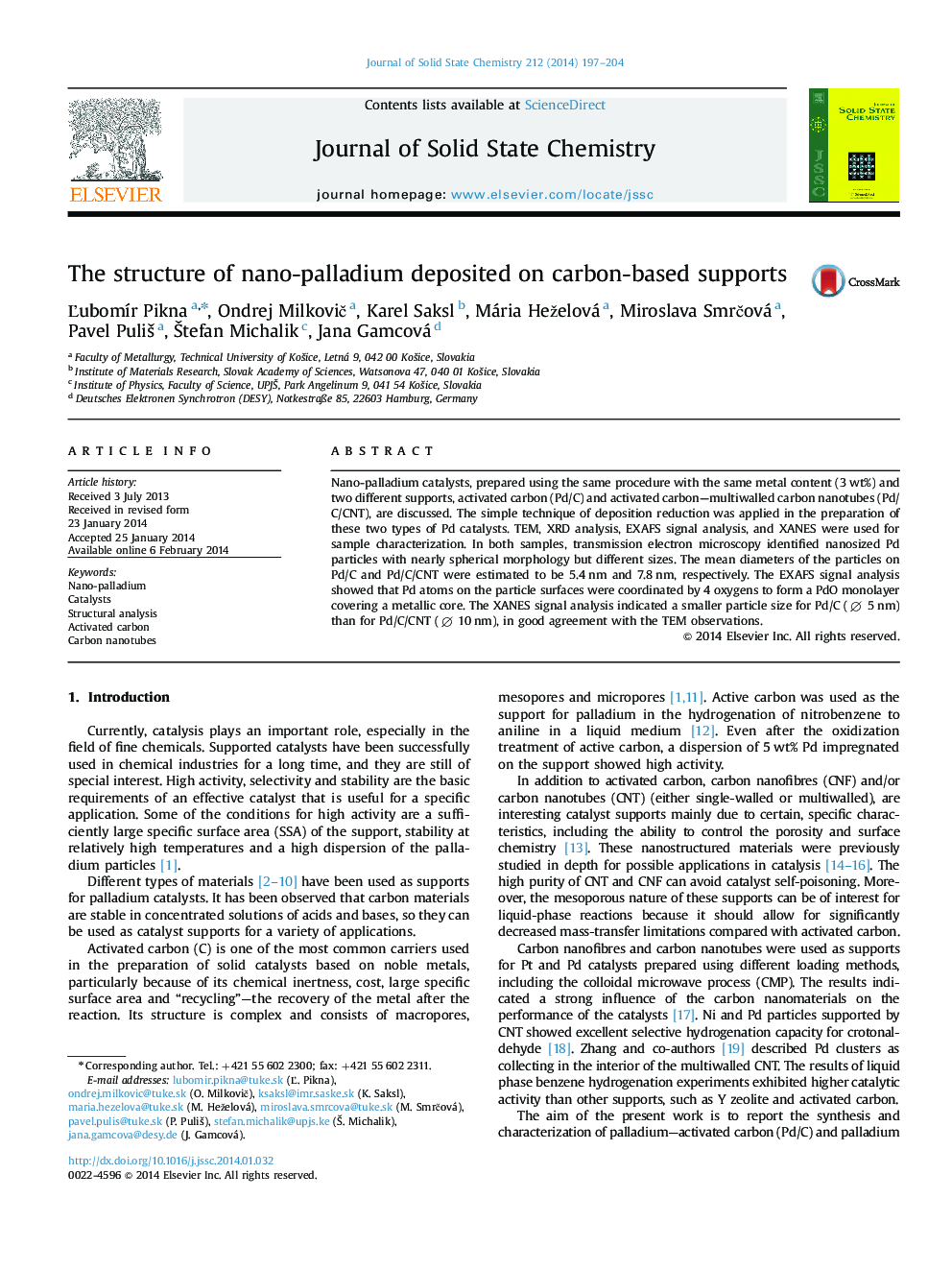| Article ID | Journal | Published Year | Pages | File Type |
|---|---|---|---|---|
| 1329878 | Journal of Solid State Chemistry | 2014 | 8 Pages |
•Pd catalysts were prepared on two types of supports: carbon and carbon nanotubes.•BET, TEM, XRD characterization of prepared catalysts.•XAFS: Concentration of Pd in samples Pd/C and Pd/C/CNT.•EXAFS and XANES signal analysis of catalysts.•Visualisation of atoms arrangement at the Pd nanoparticle surface.
Nano-palladium catalysts, prepared using the same procedure with the same metal content (3 wt%) and two different supports, activated carbon (Pd/C) and activated carbon—multiwalled carbon nanotubes (Pd/C/CNT), are discussed. The simple technique of deposition reduction was applied in the preparation of these two types of Pd catalysts. TEM, XRD analysis, EXAFS signal analysis, and XANES were used for sample characterization. In both samples, transmission electron microscopy identified nanosized Pd particles with nearly spherical morphology but different sizes. The mean diameters of the particles on Pd/C and Pd/C/CNT were estimated to be 5.4 nm and 7.8 nm, respectively. The EXAFS signal analysis showed that Pd atoms on the particle surfaces were coordinated by 4 oxygens to form a PdO monolayer covering a metallic core. The XANES signal analysis indicated a smaller particle size for Pd/C (∅ 5 nm) than for Pd/C/CNT (∅ 10 nm), in good agreement with the TEM observations.
Graphical abstractVisualization of metallic core (left), oxide monolayer (middle) and nanoparticle of diameter 5 nm (right).Figure optionsDownload full-size imageDownload as PowerPoint slide
